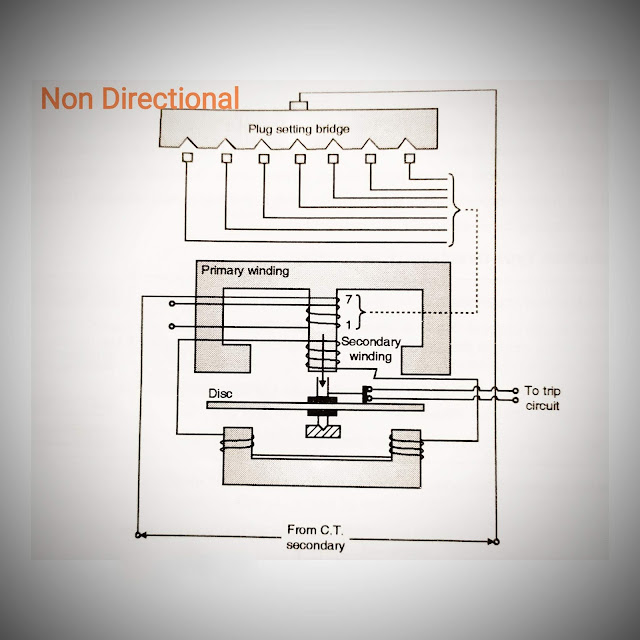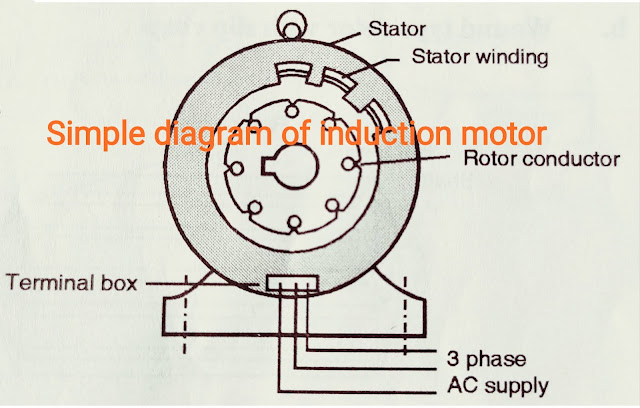Design of Rotor slots
Design of Rotor slots
Number of rotor slots:
- This is the first step in the design of rotor. In this number of rotor slots are selected in consideration with stator slots. It is to be noted that selection of number of rotor slots in squirrel cage induction motor is very important because with certain combination of number of poles, stator slots and rotor slots induction motor may behave abnormally, like refusal to start (cogging) or may rotate at some sub synchronous speed (crawling) and sometimes severe Vibrations and excessive noise is observed.
- Normally these effects are produced by the harmonic fields which are created due to
(i)windings (ii) slotting
(iii) saturaaon and (iv) air gap irregularities.
- These harmonic Fields induce emfs in rotor windings and circulate harmonic current, winich poduce hamaonic torque.
- It is to be noted that hamaonic field has more number of poles (np where n is order of harnaonic e. g. If third harnnonic is present and motor is designed for 4 poles then the harmonic field will have number of poles = 3 × 4 = 12). Due to the more number of poles, these harmonic field has lower synchronous speed [ Ns = 120f÷poles = 120f÷np ].
- Some of the harmonic field rotate in the Forward direction and some rotate in the backward direction. These field produce breaking torque. These harmonic fields also increase the stray load losses, increase temperature or motor.
Harmonic field produce lwo torques
(i) Harmonic induction torque:-
- A three phase winding carrying sinusoidal currents produce harmonies of the order 6N ± 1 where N is an integer. So if N = 1 we will get
- Positive means movement of harmonic is with the direction of rotation (I. e. 7th harmonic) and negative means movement of harmonic is against the direction of rotation.
- These torque introduce dips in the torque speed characteristics of the motor and with certain stator slot and rotor slot combinations, dips due to harmonies may become significant and then motor can not accelerate to its rated speed and continues to rotate at a speed little lower than the 1÷Nth synchronous speed. This phenomenon is called as 'crawling'.
- Hamionics are also produced due to slotting and order of harmonies is given by 6 Aq ± 1 where A is an integer and q is slots/pole/phase. For some slot combinaaons effect of dips is increased and causes vibrations. It can be shown that this can be avoided if the rotor slot does not exceed stator slots by around 15-30%.
(ii) Harmonic synchronous torque:-
- When the harmonics produced by the stator and rotor are of the same order and if their speed happen to be same, then they will lock together and give rise to powerful synchonous torque. Due to this motor crawls at constant sub synchronous speed. It is to be noted that if crawling is due to synchronous action then crawling speed is constant while if crawling is due to induction action then crawling speed may change due to load.
- A special case can occur when stator slots (Ss) are equal to rotor slots (Sr). Wnen this happens, harmonics speed of stator and rotor matches and harmonics of every order would try To exert synchronous torque at their corresponding synchronous speed and the result is machine refuses to start. This phenomenon is known as 'cogging'. (Alternatively this can be explained as-it is well known that magnetic circuit has tendency to align itself in a position of minimum reluctance. It Ss = Sr then when teeth of stator and rotor are opposite to each other then reluctance is least and this will prevent motor to rotate).
- Thus Ss ≠ Sr also when Sr - Ss = P same effect is observed so should be avoided.
(iii) Vibrations and noise:-
- During rotation rotor teeth and stator teeth continuously move with respect to each other, so there is periodical variation of flux density in air gap. This produces rapid changes in forces of attraction between stator and rotor teeth and this produces vibrations, while unbalanced magnetic pull is one of the reasons of noise, it also produces vibrations.
(iv) Voltage ripples:-
- Due to hamaonic field voltage ripples are produced in terminal voltage. This increases the iron losses also.
Rotor slots selection rules:-
- From the above discussion some rules are created to avoid/reduce the above problem. The rules for selection of number of rotor slots are:
(I) Number of rotor slots should not be equal to number of stator slots (as it causes, cogging). Number of rotor slots should either be large or smaller. Good results are obtained when difference between rotor slots and stator slots is 15 to 30%.
(ii) Ss - Sr ≠ P or 2P or 5P because then the forward rotating harmonics produced by stater
are equal to backward rotating harmonics by rotor and then machine crawls at sub synchronous speed.
(iii) in order to avoid magnetic locking Ss - Sr ≠ 3P for 3 phase machines.
(iv) Ss - Sr ≠ 1, 2, (P ± 1), (P ± 2) for avoiding noise and the vibrations.
Methods to reduce harmonics:-
- To reduce harmonies following methods are used:
(I) Chording:
- Harmonic mmf is reduced by reducing the stator winding mmf. This is achieved by chording the winding and by using e integral number of slots/pole/phase.
(ii) Integral slot winding:
- The slots/pole/phase should be an integral number because the fractional slots/pole/phase create asymmetrical mmf distribution around the air gap. This creates harmonics and noise.
(iii) Skewing:
- Many problems in induction motor like noise, vibrations, cogging etc can be reduced or eliminated by skewing either the stator or rotor. Generally the rotor bars are skewed by an angle just sufficient to cause induction of two equal and opposite harmonic emf in each bar.The bars must be skewed such that they should lie under alternate hamaonic poles of same polarity so they are skewed through 2 pole pitches.
Angle of skew = 2 × 360°÷ np
Where n = Number of harmonic (I. e. 3, 5, 7 etc.)
P = Number of poles
→ Qsk = 720°÷np mechanical
→ Qsk = 720°÷np × p÷2 = 360°÷n electrical.



Comments
Post a Comment